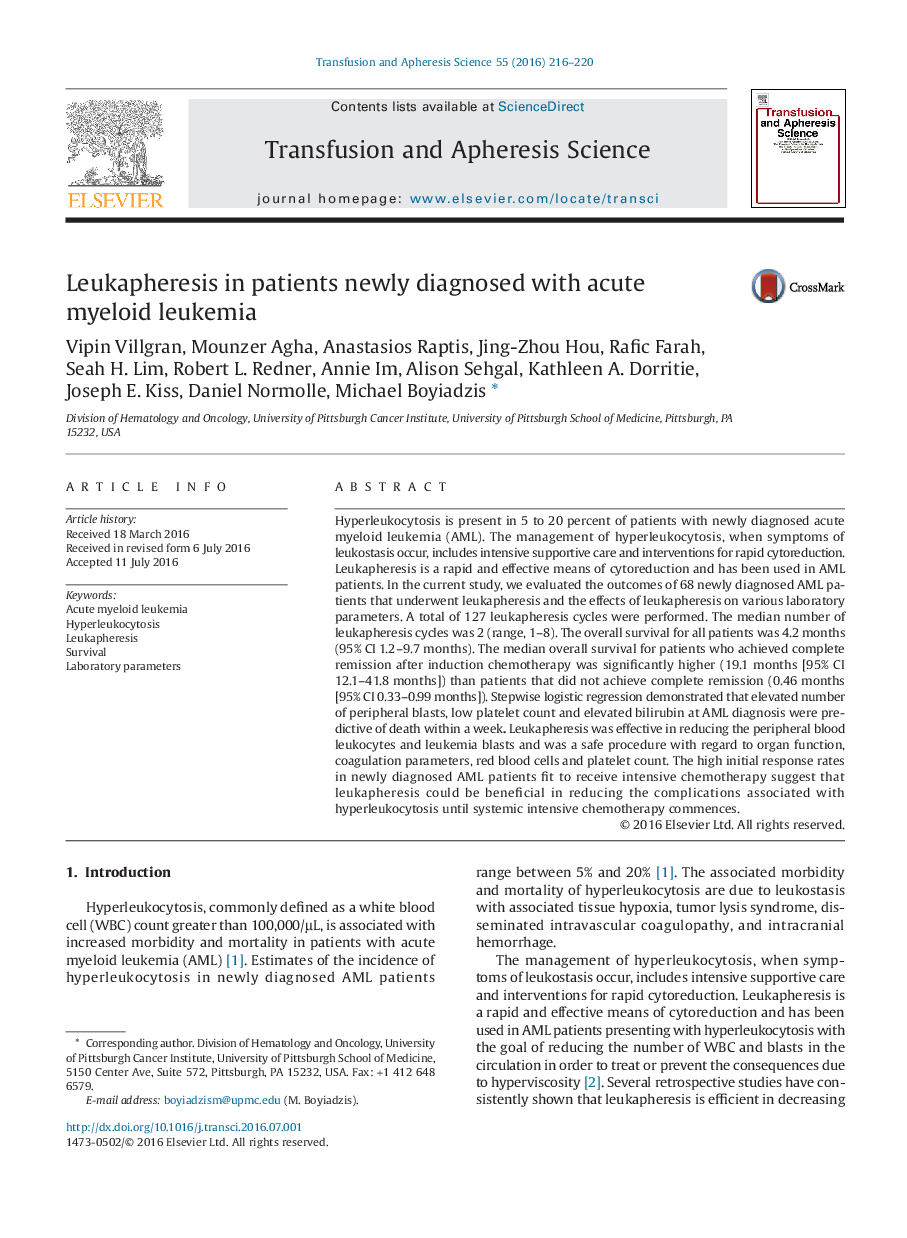| Article ID | Journal | Published Year | Pages | File Type |
|---|---|---|---|---|
| 5664747 | Transfusion and Apheresis Science | 2016 | 5 Pages |
Hyperleukocytosis is present in 5 to 20 percent of patients with newly diagnosed acute myeloid leukemia (AML). The management of hyperleukocytosis, when symptoms of leukostasis occur, includes intensive supportive care and interventions for rapid cytoreduction. Leukapheresis is a rapid and effective means of cytoreduction and has been used in AML patients. In the current study, we evaluated the outcomes of 68 newly diagnosed AML patients that underwent leukapheresis and the effects of leukapheresis on various laboratory parameters. A total of 127 leukapheresis cycles were performed. The median number of leukapheresis cycles was 2 (range, 1-8). The overall survival for all patients was 4.2 months (95% CI 1.2-9.7 months). The median overall survival for patients who achieved complete remission after induction chemotherapy was significantly higher (19.1 months [95% CI 12.1-41.8 months]) than patients that did not achieve complete remission (0.46 months [95% CI 0.33-0.99 months]). Stepwise logistic regression demonstrated that elevated number of peripheral blasts, low platelet count and elevated bilirubin at AML diagnosis were predictive of death within a week. Leukapheresis was effective in reducing the peripheral blood leukocytes and leukemia blasts and was a safe procedure with regard to organ function, coagulation parameters, red blood cells and platelet count. The high initial response rates in newly diagnosed AML patients fit to receive intensive chemotherapy suggest that leukapheresis could be beneficial in reducing the complications associated with hyperleukocytosis until systemic intensive chemotherapy commences.
